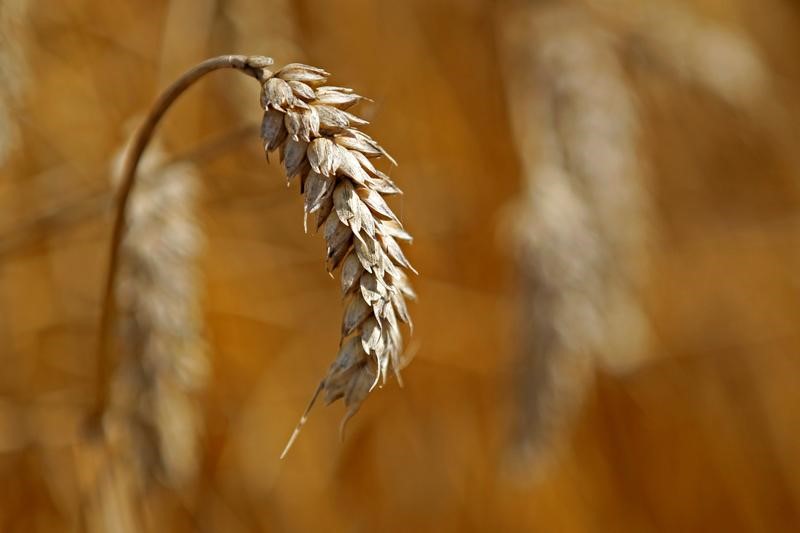(Corrects to removes extraneous word in second last paragraph)
* Australia to produce third biggest wheat crop in 30 years
* Concerns over Black Sea conditions lead to wheat price rise
By Jonathan Barrett
MOREE, Australia, Nov 2 (Reuters) - For the past few years, crop machinery has sat idle in many Australian farm sheds as a devastating drought left almost nothing to harvest across the country's pancake-flat eastern wheatbelt.
As the southern summer approaches, however, Ben Ledingham now watches combine harvesters race up and down wheat fields on his family's property just outside Moree, an inland town in New South Wales.
Many of the areas worst hit by the three-year drought in the country's east, including Moree, are now leading an agricultural recovery that is tipped to produce Australia's third-biggest wheat crop in 30 years.
"They only did a couple of hours really, the last couple of years, a little bit of grain that we found," Ledingham said of the combine harvesters.
"It was quite painful seeing things parked in sheds and not getting used. At least it is all running now."
The golden harvest also coincides with rising concerns over dry conditions in the Black Sea growing region - Ukraine, Russia, and Kazakhstan - which has put a rocket under international wheat prices in recent weeks, pushing prices to a six-year high of above $6.30 a bushel.
The bumper wheat season is expected to produce 29 million tonnes across the continent, up 90% from last season, according to government forecasts.
That could hardly come at a better time for Australia. Like most economies, Australia has been pushed deep into fiscal deficit and its jobs market roiled by the coronavirus pandemic. in the eastern wheatbelt, the agricultural sector is looking for workers.
"The big issue is about finding skilled staff - if someone has a rough idea what they are doing, they are in demand. Out here, you wouldn't know there's a pandemic," said Tracy Blackburn, who helps run a family agricultural operation in central New South Wales.
THREAT TO FORECASTS
The main threat to strong wheat production forecasts is that rain will interfere with harvests in the east. Meanwhile, a dry end to the West Australian season on the other side of the continent could cut yields.
When Reuters visited the eastern state wheatbelt last week, several farmers said they had been disrupted by wet weather almost since harvesting began in early October. In some cases, the quality of the crop had been affected by the wet.
Yet the early signs for the country's biggest crop of the year are still strong.
At a storage site in Moree, trucks are rolling in earlier than usual, building up grain bunkers in preparation for the wheat to be transported to domestic and international buyers.
"The bunkers are quite advanced to what they would normally be for this time of the year," said Jaimee Maunder, a grain merchant at CHS Broadbent.
Maunder said farmers were on track to harvest excess grain, which bodes well for exports.
Australian wheat exports are forecast to almost double with grain to go to markets like Indonesia, Vietnam, Japan, Philippines, Korea and China.
Money generated from good crops has brought new life to Australia's rural centres, many of which suffered severe water shortages until heavy rains broke the drought early this year.
"The whole township of Moree and local towns are getting a lot better business. People are starting to spend money and that's helping a lot, it's really turning everything around," said Ledingham.
Boutique stores have started opening in Moree's town centre even as the pandemic prompts similar businesses to close in Australia's big cities. One pub manager told Reuters that farmers were too busy to come out for a drink, though he expects patronage to pick up after the harvest ends.
The crop has both lifted community spirits and visibly changed the countryside.
From his tractor perched above ready-to-harvest grain, Alexander Madden, a Moree farmer, can see golden fields that stretch almost endlessly across the wheatbelt.
"Seeing what's in front of you and knowing what's in the silo, it's virtually in the bank so it's pleasing just to know that we're harvesting big crops again," Madden said.
